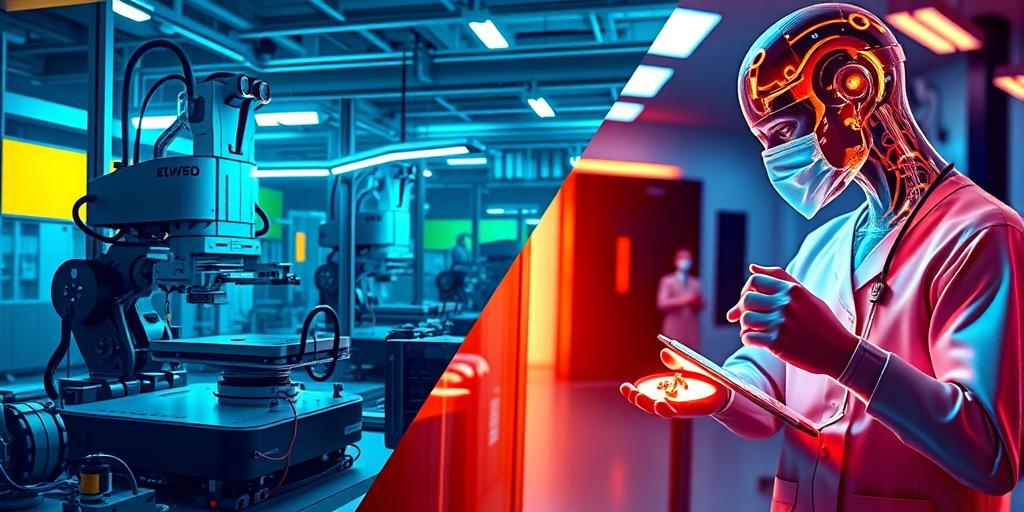Have you ever wondered how 3D printing is revolutionizing the manufacturing industry and reshaping the future of healthcare? This groundbreaking technology is no longer a futuristic fantasy; it’s rapidly changing how we design, produce, and deliver products and medical solutions. Prepare to be amazed as we explore the incredible influence of 3D printing across these pivotal sectors.
3D Printing: Reshaping Modern Manufacturing
The manufacturing industry is undergoing a seismic shift thanks to 3D printing, also known as additive manufacturing. This innovative technology offers unprecedented design freedom and flexibility. Unlike traditional subtractive manufacturing methods that remove material, 3D printing builds objects layer by layer from a digital design. This approach allows manufacturers to create complex geometries and intricate details that were previously impossible to achieve. The benefits are numerous and far-reaching, making 3D printing an indispensable tool in modern manufacturing processes.
Streamlined Prototyping and Production
One of the most significant advantages of 3D printing in manufacturing is its ability to streamline prototyping. Designers can quickly and affordably produce prototypes, test them, make adjustments, and iterate on the design until perfection is achieved. This significantly reduces lead times and accelerates the product development cycle, bringing innovative products to market faster. The on-demand production capabilities of 3D printing also eliminate the need for large-scale production runs and large amounts of inventory, allowing for efficient manufacturing based on specific needs and demands. This efficiency translates directly to cost savings and greater flexibility for businesses of all sizes.
Enhanced Customization and Personalization
3D printing has revolutionized the potential for product customization and personalization. Manufacturers can easily tailor products to meet specific customer needs or preferences, creating unique and bespoke items without significant increases in cost. This increased customization opens up exciting possibilities in several sectors, from personalized medical devices to custom-designed apparel and consumer goods. This level of personal attention and precise tailoring is revolutionizing consumer expectations and raising the bar for product offerings.
Sustainable and Economical Manufacturing
Furthermore, 3D printing offers a greener and more economical approach to manufacturing. Additive manufacturing allows for the use of less material, reducing waste and lowering overall production costs. This environmentally friendly method also minimizes transportation costs, reduces the carbon footprint, and fosters a sustainable manufacturing approach. These environmental and economic benefits are increasingly important considerations for many manufacturers and consumers alike. The ability to manufacture on demand further reduces the need for excess production and associated waste.
3D Printing’s Impact on the Healthcare Industry
The healthcare industry stands to gain immeasurably from the innovative capabilities of 3D printing. Its ability to create intricate and highly personalized medical solutions is transforming patient care and medical research. From prosthetics and implants to medical models and surgical tools, 3D printing is enhancing the precision and effectiveness of healthcare services.
Customized Prosthetics and Implants
3D printing is creating a revolution in the design and manufacture of customized prosthetics and implants. Using advanced imaging techniques, healthcare professionals can create perfectly fitting prosthetics and implants tailored to each patient’s unique anatomy. This personalized approach leads to improved comfort, mobility, and overall quality of life for patients. The ability to create intricate designs also allows for better integration with the patient’s body, resulting in more effective and less invasive procedures. The speed and precision of 3D printing is also reducing the lead time for receiving these critical devices.
Advanced Surgical Planning and Simulation
3D printing is significantly impacting surgical planning and simulation. Surgeons can use 3D-printed models of patients’ organs and anatomical structures to practice procedures beforehand. This allows them to improve their surgical technique, identify potential challenges, and increase the likelihood of a successful operation. This technology is crucial in complex surgeries involving intricate anatomical structures or unique patient conditions. The detailed accuracy of the 3D models allows for better surgical planning and higher patient safety.
Drug Discovery and Development
The applications of 3D printing extend even to the realm of drug discovery and development. Scientists are using 3D printing to create sophisticated drug delivery systems, personalized medications, and models of biological tissues. This advancement is accelerating the pace of drug development, leading to the creation of more effective and targeted therapies. The possibilities offered by 3D printing in drug discovery represent a giant leap towards more efficient and personalized medicine.
The Future of 3D Printing
The future of 3D printing is brimming with boundless potential. As the technology continues to advance, it will undoubtedly find even more applications in manufacturing, healthcare, and other sectors. We can anticipate more advanced materials, faster printing speeds, and even greater levels of precision. The impact of 3D printing on our world will only continue to expand in the coming years. It’s a technology that’s transforming how we design, create, and deliver products and medical solutions, creating a world of possibilities.
Embrace the future; explore the innovative world of 3D printing. Its transformative power is changing how we manufacture products, deliver healthcare solutions, and shape our world. Learn more about its applications and benefits and discover how it can improve your products and services!




